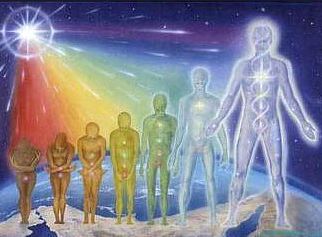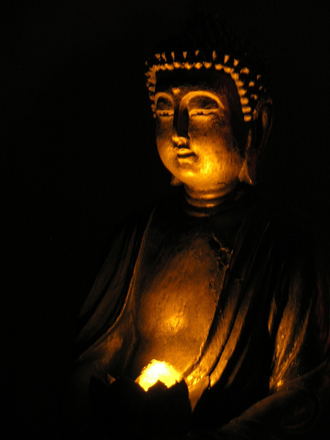NAVRATRI SEPT 26 -OCT 4TH 2022
Navratri, which literally refers to nine days as “Navratri 9 days fast“, is a well celebrated festival of Hindu. Devotees keep fast for 9 days and worship the 9 different forms of Goddess Shakti.
The most well known Navratri is Shardiya which is celebrated around October and is considered very auspicious, then some people also do “Chaitra Navratri” which is around April, but you may be surprised to know that there are 4 Navratri occuring in every year and each consisting of 9 days, ok good if you know but most of people are not aware.
Significance of Navratri - The Mythology story behind
The legend story associated with Navratri talks about the great battle that took place between a powerful demon Mahishasura and the Goddess Durga (one of the 9 forms of Goddess Shakti).
After a great penance Mahishasura got blessed with immortality by Lord Brahma under one condition that he could be killed only by a woman. Armed with the blessing of immortality and power, Mahishasura felt invincible as a woman can never defeat him to kill and noone else can kills him. He attacked & captured all areas of earth, heaven and hell. The worried Gods prayed to Lord Brahma, Lord Vishnu and Lord Shiva to help them defeat their worst enemy. Lord Shiv and Lord Brahma put their powers together in the woman form of Lord Vishnu and created a powerful Goddess, Durga. Goddess Durga is believed to be a reincarnation of Goddess Parvati (who is also called Shakti, which gives energy and runs the universe), the wife of Lord Shiv.
The Four Navratras are:
- MAGHA GUPT NAVRATRI – It occurs around Feb for 9 days. It is more popularly known to people as Vasant Panchami. This falls during January and February.
- CHAITRA NAVRATRI – Chaitra represents Spring season, and is celebrated March-April which is Chaitra in Hindu calendar. This 9-day long occasion starts from the first day (pratipada) of the first month of the Hindu Lunar calendar “Chaitra”. Most of the rituals and customs are the same as followed during the ‘Shardiya Navratri’.
- Asadha Gupt Navratri – This Navratri falls during the winter season, from January-February, so it is more popularly called as Vasant Panchami.
- Shardiya Navratri – Among all Navratri; Shardiya Navratri is the most popular and significant. Shardiya (Sharada) means autumn and it falls during the months of September-October. This Navratri is also known as Maha Navratri and Sharada Navratri.
The different avatars of Goddess is worshipped on each day of Navaratri.
On the first day, people worship Goddess Shailputri while Goddess Brahmacharini is worshipped on the second day. Then on the 3rd day we worship Goddess Chandraghanta; on the fourth day Goddess Kushmanda is worshipped; on the fifth day Goddess Skandamata is worshipped; on the sixth day Goddess Katyayani is worshipped; on the seventh day Goddess Kaalratri is worshipped; on the eighth day Goddess Mahagauri is worshipped and on the last and final 9th day the Goddess Siddhidatri is worshipped.
These fast has a lot of spiritual and scientific meaning too, it helps cleanse our body and mind along with emotions, and bring better control on these.
Rahu represents the demon in our chart, hence people with malefic Rahu and being harmed by it will benefit a lot from Navratri process. Although this festival is celebrated in a big way, people forget the spiritual aspect of it and its connection to our spiritual development. To fight the fears of Rahu, the rejections of Ketu, it is important to fast during the day during these nine days with the mindset to overcome our inner fears and the resolve to confront and overcome our weaknesses.
The divine mothers are representation of Shakti and they alone give the power to their devotee to conquer all. These divine mothers are known as the Nava Durga (9 Names of Durga). Each of the days honors an aspect of Divine Mother and step by step the aspirant.”
The days are also subdivided into 3 sets of three days:
Kali: The first three days are devoted to Kali, the Goddess of Destruction and Restoration. She is the wife of Shiva. It is a time of purification, a time to let go of all that is not right for your life so that the heart is clear to accept the new energy from the divine. This is also a time to control the demon of Rahu: the desires, the needs, and the fears that keep us tied to the world and give rise to more and more desires and therefore, disappointments in life.
Lakshmi: The second three days are devoted to Lakshmi, the Goddess of Prosperity and Wealth. She is the wife of Vishnu. It is a time of preservation of your good nature and what is good in your life and acquiring new things — ethically — that make your life wealthy and prosperous. Think about preserving and acquiring spiritual wealth.
Saraswati: The last three days are devoted to Saraswati, the Goddess of Wisdom, Knowledge and the Arts. She is the wife of Brahma. This is the time of receiving Divine Guidance on how to properly use all resources.
With each set of three days, you move closer to your spiritual goals. Goddess Kali helps to purify your mind and free it up for new possibilities. The mind has to be free of its old obsessions and desires, only then it is ready to take on new information.
In the second set, Goddess Lakshmi helps you to preserve what is good already and take positive steps towards making yourself wealthy, both materially and spiritually. (Sept. 29-Oct 1)
Finally, Goddess Saraswati gives the knowledge and wisdom to embrace the path of Brahman and overcome any obstacles on the path to moksha. If we do this ritual annually then we will slowly but surely find the path to the development and realization.
Navratri days are very powerful and hence a great opportunity for those looking for spiritual growth, and “Navratri 9 fast days” just provides a guide for its maximum use for the purpose.
You can see the details of each 9 Goddess that we worship in Navratri in our Web-Story:
https://shikti.com/spiritual/9-goddess-of-navratri/
HAPPY NAVRATRI !



I think you have noted some very interesting details , appreciate it for the post.